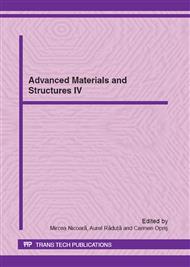[1]
C. R. Dandekar, Y.C. Shin, J. Barnes, Machineability improvement of titanium alloy (Ti-6Al-4V) via LAM and hybrid machining, International Journal of Machine Tools and Manufacture. 50 (2010) 174-182.
DOI: 10.1016/j.ijmachtools.2009.10.013
Google Scholar
[2]
I.A. Choudhury, M.A. El-Baradie, Machineability of nickel-base super alloys: a general review, Journal of Materials Processing Technology. 77 (1998) 278-284.
DOI: 10.1016/s0924-0136(97)00429-9
Google Scholar
[3]
A.V. Mitrofanov, V.I. Babitsky, V.V. Silberschmidt, Finite element analysis of ultrasonically assisted turning of Inconel 718, Journal of Materials Processing Technology. 153-154 (2004) 233-239.
DOI: 10.1016/j.jmatprotec.2004.04.299
Google Scholar
[4]
N. Ahmed, A.V. Mitrofanov, V.I. Babitsky, V.V. Silberschmidt, 3D finite element analysis of ultrasonically assisted turning, Computational Materials Science. 39 (2007) 149-154.
DOI: 10.1016/j.commatsci.2005.12.045
Google Scholar
[5]
DMG: 2010. DMG D4839/0210ND1; In: Ultrasonic Series; ULTRASONICS hard machining and milling on one machine.
Google Scholar
[6]
MSC.Marc User's Guide Version 2011. MSC Software Corporation LA.
Google Scholar
[7]
B.J. Ranganath, Metal cutting and tool design, : Vikas publishing house; 1999.
Google Scholar
[8]
M. Demiral, A. Roy, V.V. Silberschmidt, Effects of loading conditions on deformation process in indentation, Computers Materials and Continua. 475(1) (2010) 1-18.
Google Scholar
[9]
W.S. Lee, C.F. Lin, H. Chen, H.W. Chen, Dynamic mechanical behaviour and dislocation substructure evolution of Inconel 718 over a wide temperature range, Materials Science and Engineering A. 528 (2011) 6279-6286.
DOI: 10.1016/j.msea.2011.04.079
Google Scholar
[10]
G. Shi, X. Deng, C. Shet, A finite element study of the effect of friction in orthogonal metal cutting, Finite Elements in Analysis and Design. 38 (2002) 863-883.
DOI: 10.1016/s0168-874x(01)00110-x
Google Scholar
[11]
M. Baker, J. Rosler, C. Siemers, A finite element model of high speed metal cutting with adiabatic shearing, Computers and Structures. 80 (2002) 495-513.
DOI: 10.1016/s0045-7949(02)00023-8
Google Scholar
[12]
R. Muhammad, N. Ahmed, M. Demiral, A. Roy, V.V. Silberschmidt, Computational study of ultrasonically-assisted turning of Ti alloys. Advanced Materials Research. (2011) 223 30-36.
DOI: 10.4028/www.scientific.net/amr.223.30
Google Scholar
[13]
N. Ahmed, A.V. Mitrofanov, V.I. Babitsky, V.V. Silberschmidt, Analysis of forces in ultrasonically assisted turning, Journal of Sound and Vibration. 308 (2007) 845-854.
DOI: 10.1016/j.jsv.2007.04.003
Google Scholar


